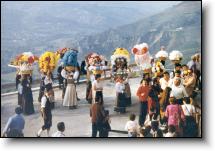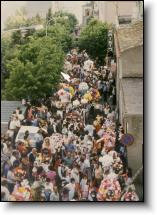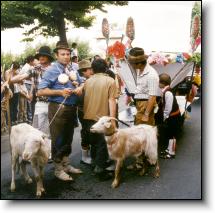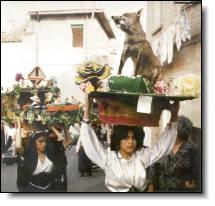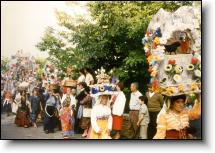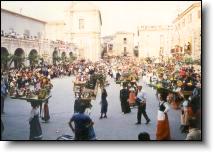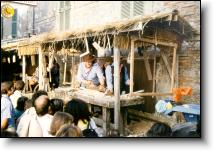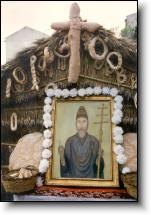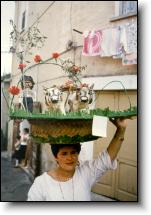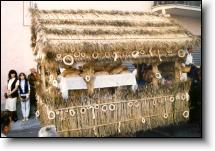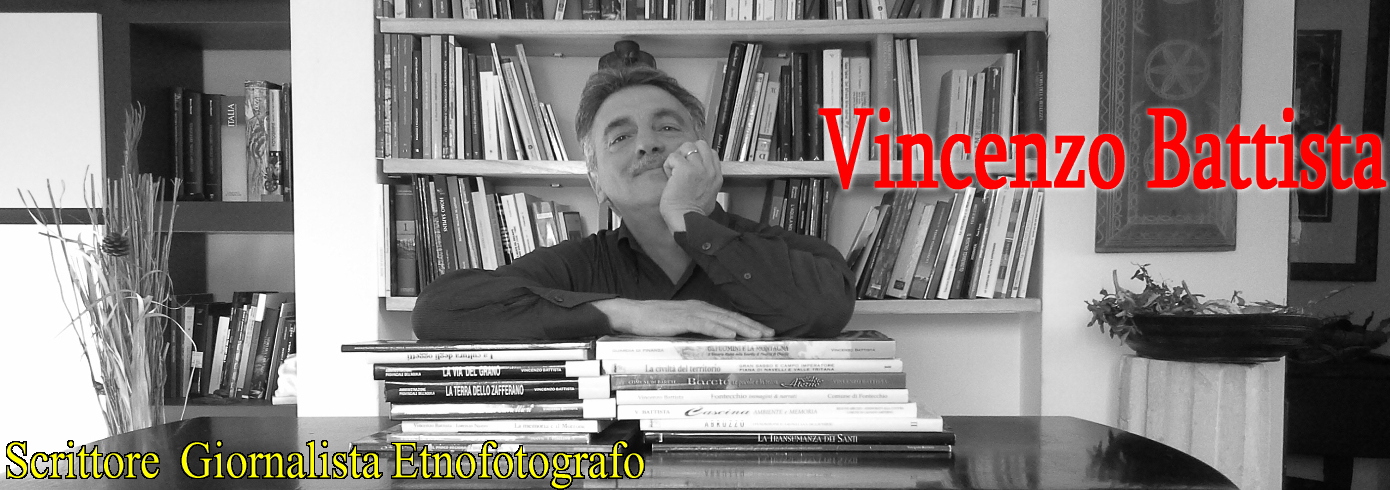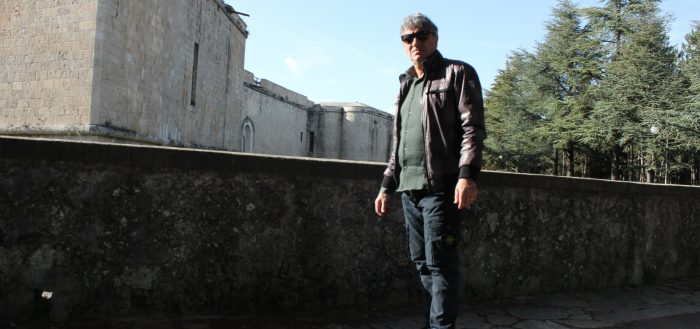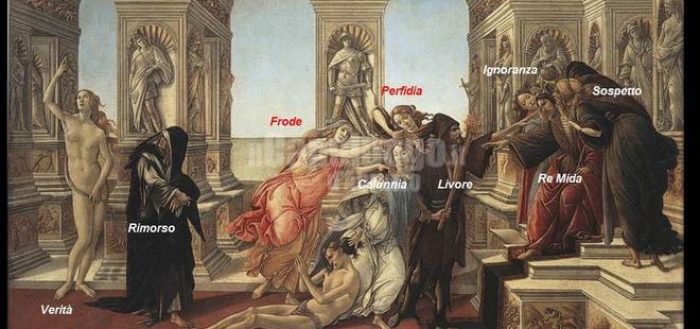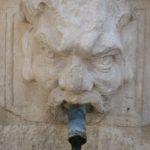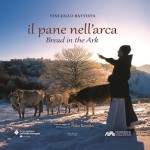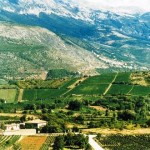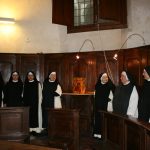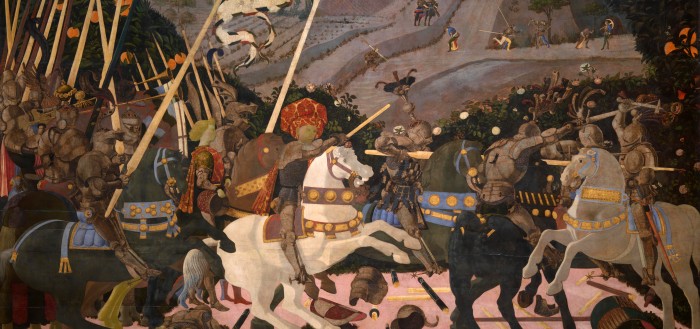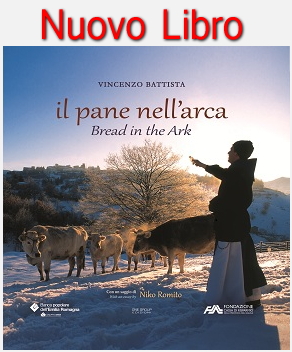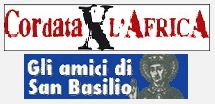Testo e fotografia di Vincenzo Battista.
Nella settimana tra il 18 e il 25 maggio a Bucchianico, in provincia di Chieti, si rinnova la leggenda di Sant’Urbano I Papa, patrono del paese, che intervenne per scongiurare l’assedio del borgo da parte delle milizie di Chieti. La festa popolare racconta visivamente, in una lunga maratona di figuranti, oggetti, arredi popolari, e scenografie allegoriche, le vicende e la cronaca del tempo così come tramandata dagli antichi saperi della cultura popolare autoctona. Il corteo, all’inizio della manifestazione, rievoca l’esodo dalle campagne verso la cittadina fortificata di Bucchianico e l’ingresso in città della popolazione, che viveva fuori le mura, per chiedere di essere protetta. Entrano nel borgo i figuranti appunto con evidenti oggetti e forme allegoriche riferite al mondo contadino e pastorale della zona. Per resistere all’assedio, rievocando il passato, i personaggi in costume, i contadini, portano all’interno del paese i beni agricoli e alimentari e si pongono quindi sotto la protezione del Sergentiere. Canestri, cesti, conche ed altri recipienti ornati rappresentano la metafora del mondo agricolo che ha la sua dominante nella creatività della cultura popolare. Sfilano in particolare le donne in corteo fino alla piazza del paese dove ha luogo la “Ciammaichella”, un ballo, un carosello di forme e colori accompagnato dai suoni degli strumenti popolari che si intrecciano nello spazio scenico della sfilata che sembra non avere termine. E proprio questa “Ciammaichella”, suggerita da Sant’Urbano al Sergentiere – comandante delle milizie popolari – che scoraggiò le truppe teatine nel proseguire l’assedio perché credettero che il borgo fosse ben armato e difeso da un folto esercito. Sfilano anche i carri riccamente addobbati con scene che rappresentano le varie attività di cultura materiale: la bottega del falegname, il forno, scene di pastorizia, l’ambiente della rameria, la casa contadina, i locali delle cantine e tante altre botteghe artigianali (rappresentano suppellettili e vettovaglie da proteggere) a testimoniare la solidarietà delle corporazioni e la compattezza della comunità chiamata dalle contrade a difendersi dagli oppressori. L’immagine di Sant’Urbano comunque emerge dal carro: rappresenta il pane, la fecondità che così viene custodita, protetta. Una donna, in corteo, in evidenza nella sfilata, ha preparato un canestro che rappresenta due buoi che guidati da un contadino arano un terreno: un simbolo forte di appartenenza e di identità culturale di una ricca zona agricola che conserva la memoria del passato anche attraverso i suoi simboli minori.
Traduzione di Piera Badia
During the week between 18 and 25 May in Bucchianico, in the Province of Chieti, there takes place a re-enactment of the legend of St. Urbano I the Pope, patron of the town, whose intervention saved the citadel from the siege of the troops of Chieti. The folk festival tells through images the stories and the chronicle of that time, as it was passed on by the ancient wisdom of the local folk culture.
In the early stages of the event the parade re-enacts the exodus from the countryside towards Bucchianico fortified borough and the entrance into the town of the countryside people who lived outside the walls to ask for protection.
The characters enter the borough with clear allegorical forms and objects drawn from the peasant and shepherd’s world of the area. In order to endure the siege, the characters representing the peasants bring into the citadel foodstuffs and other items from the countryside, and seek protection from the Sergentiere. Baskets, chests, pots and other embellished containers are metaphors of the agricultural world, whose main feature is the creativity of folk culture.
It is mostly the women that parade up to the village square, where the “ciammaichella” takes place, a kind of dance similar to a carousel of forms and colors to the music of folk instruments, that intertwine on the stage of the square in a seemingly endless parade. This is exactly the “ciammaichella”, suggested by St.Urbano to the Sergentiere – the commander of the civic troops – which discouraged the army of Chieti from continuing the siege since they were led to believe that the borough was armed and defended by a numerous army.
In the parade also the wagons follow one another, richly decorated and representing scenes of the everyday activities of the crafts culture: the carpenter’s workshop, the oven, moments of sheep-raising, the copper workshop, the farmhouse, the pub locals, ans so many other workshops (showing provisions and tools to be protected) as a sign of solidarity of the crafts guilds and the unity of the town called by its quarters and hamlets to oppose the invaders.
The picture of St. Urbano can be seen emerging from the wagon, to represent bread, the fertility of the land to be safeguarded and protected.
A lady prepared a basket with images representing a team of oxen plowing a plot of land, driven by a peasant: a powerful symbol of sharing the cultural identity of a richly agricultural area, engaged to preserve the memory of the past also through these simpler symbols.
